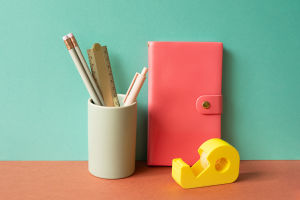A mug is a common and practical drinking utensil that is widely used in daily life.
It is typically made from ceramic, glass, stainless steel, or plastic, and its thick walls and handle design have made it a popular choice among the public.
The mug is not only an essential part of daily life, but it also carries rich cultural and emotional symbolism.
First and foremost, the origin of the mug can be traced back thousands of years. As early as ancient times, humans began using simple utensils to hold liquids. In civilizations like ancient Greece and ancient Rome, ceramic or metal cups were widely used.
However, the modern mug, particularly the type with a handle designed for hot drinks, mainly originated in the Middle Ages in Europe. Over time, mugs have evolved into various designs and functions, becoming an indispensable part of people's daily routines.
In terms of design, mugs usually have thicker walls and wide mouths, making them suitable for both hot and cold drinks. Whether it’s coffee, tea, hot chocolate, or even iced beverages, the mug is a versatile option.
One of its defining features is the handle, which sets it apart from other types of cups. The handle allows people to avoid directly touching the body of the cup when drinking hot beverages, helping to prevent burns.
As design continues to evolve, mugs today are not only practical but also aesthetically pleasing. Many are adorned with a variety of patterns, texts, or images, and can even be personalized according to individual preferences, serving as a reflection of one’s personality and attitude toward life.
The selection of materials for mugs is equally diverse. Ceramic and glass are the most common materials. Ceramic mugs are favored by many families and offices due to their excellent heat retention, ease of cleaning, and minimal absorption of odors.
Glass mugs, with their transparent and stylish appearance, are especially popular among younger consumers. Stainless steel mugs are frequently used in outdoor activities or during travel.
They are highly regarded for their durability, portability, and ability to maintain the temperature of drinks for extended periods. Plastic mugs, due to their lightweight nature and affordability, are often used for children’s products or in settings where large quantities of mugs are required.
Beyond the material choices, the functionality of mugs is another key reason for their widespread use. In modern society, where the pace of life is fast, many people find themselves drinking coffee or tea while multitasking at work.
Mugs cater to this need perfectly. The typical capacity of a mug ranges from 300 ml to 500 ml, larger than that of ordinary porcelain cups, making them ideal for longer use.
Many mugs are also designed to be durable, allowing them to be used for heating beverages in a microwave or for storing drinks in the refrigerator. For those who enjoy coffee culture, a well-chosen mug is not merely a drinking tool but an integral part of the experience of savoring life.
On a cultural level, mugs carry numerous symbolic meanings and serve as a vehicle for emotional expression. Many people purchase local mugs as souvenirs while traveling. These mugs serve as mementos of their experiences and represent the local culture.
Additionally, mugs frequently appear in film, television, and advertisements, becoming cultural icons. In many well-known movies and TV shows, mugs are used as props to convey a character’s personality, mood, or lifestyle.
For instance, in the iconic American sitcom "Friends", the characters are often seen holding mugs as they chat in a café. In these scenes, the mug is not just a prop; it symbolizes warmth, relaxation, and friendship. In brand advertisements, mugs are often paired with brand imagery, serving as an expression of identity and taste.
Mugs also play an important role in group culture. Many companies, schools, and organizations customize mugs with their logos, school emblems, or slogans to use as promotional items or souvenirs.
These mugs not only enhance the sense of belonging among members but also serve as lasting keepsakes to commemorate special moments or events.
Furthermore, with the growing emphasis on environmental sustainability, more and more advocates are encouraging the use of reusable mugs to reduce the waste associated with disposable paper and plastic cups. In this way, mugs have come to play a pivotal role in today’s environmental movement.
Ultimately, mugs are more than just tools for consuming hot beverages; they have become symbols of modern lifestyles and cultural expression. With continued advancements in design and material technology, mugs will undoubtedly remain a staple in our lives, evolving to take on new value and meaning in the future.


